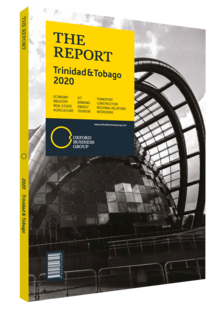Trinidad and Tobago positions itself as regional centre for liquefied natural gas bunkering
In recent years Trinidad and Tobago’s maritime industry has witnessed changes that are sending ripples around the globe. New regulations, new technologies and changing trade volumes are altering the game, and several indicators show the country stands to benefit.
A report released in August 2019 by investment firm First Citizens Research & Analytics outlined how T&T is well placed to capitalise on recent changes. On January 1, 2020 new International Maritime Organisation rules came into effect aimed at reducing sulphur oxide emissions. These regulations prohibit ships from burning fuel above a specified sulphur content based on their size.
The country’s strategic location at the meeting points of shipping lanes between North, Central and South America and the Caribbean gives it a natural geographic advantage to meet new demand from the shipping industry. Liquefied natural gas (LNG) has widely been cited as an alternative to sulphur-based fuels and could serve as a replacement for shipping companies looking to meet the new regulations. Given the considerable usage of high-sulphur fuel – the shipping industry burned through an estimated 3.5m barrels per day in 2018 – the move could galvanise T&T’s LNG output in addition to boosting the development of its port infrastructure. The country has the only liquefaction gas facility on the Atlantic coast of South America, making it attractive as a bunkering location for ships passing through the region. According to the International Gas Union’s “2018 World LNG Report”, the country has the eighth-highest nominal liquefaction capacity globally, and the highest in Latin America and the Caribbean.
Gulf of Paria
The Gulf of Paria, located between Venezuela’s east coast and Trinidad’s west coast, has been identified as an ideal location for ship-to-ship fuel transfers. The stretch of water is also strategically placed to serve as an offshore trans-shipment hub for goods transiting between Europe, the US, South America and Asia. The limited port infrastructure and unpredictable river currents in neighbouring Guyana and Venezuela are also an advantage for T&T, which can handle both Supramax and Panamax ships in its ports and bays, as well as lower-capacity vessels designed for river transport. “The Gulf of Paria is the ideal area to be used as a hub for ship-to-ship bulk transfers,” Ashley Taylor, president of the Point Lisas Industrial Port Development Corporation, told OBG. “This is due to its proximity to the Panama Canal and many major shipping lanes, as well as relatively calm sheltered waters, making it well suited to connect vessels and goods moving through the region for destinations in Europe, Asia and the Americas.”
In 2012 German dry bulk shipping company Oldendorff established its Americas hub in the Gulf of Paria. The hub connects to ports in South America, the US east coast and Gulf Coast, and the Middle East. Notwithstanding the firm’s decision to reduce the size of its operations in 2018 due to falling trade, business leaders are underscoring the potential benefits of T&T as a regional trade centre in the gulf.
Infrastructure Investment
While the potential for the country to act as a hub for both bunkering and trans-shipment is widely recognised, further infrastructure investment will be needed to ensure the full benefits of future growth. A 2009 UN report characterised the country’s maritime industry as being secondary to its energy sector, stating that “[T]he focus on energy commodities and the exploration of these products has left maritime services and port development behind”.
In the intervening decade, T&T’s infrastructure development has been limited by lower energy revenues. Port expansion has, however, continued. T&T has also signed up to China’s Belt and Road Initiative. After the country became a signatory in March 2019 it was announced that the National Infrastructure Development Company and China Harbour Engineering Company would together develop a dry-dock facility in La Brea; associated works will include deepwater channel excavation, offshore reclamation and terminal land construction.
You have reached the limit of premium articles you can view for free.
Choose from the options below to purchase print or digital editions of our Reports. You can also purchase a website subscription giving you unlimited access to all of our Reports online for 12 months.
If you have already purchased this Report or have a website subscription, please login to continue.

